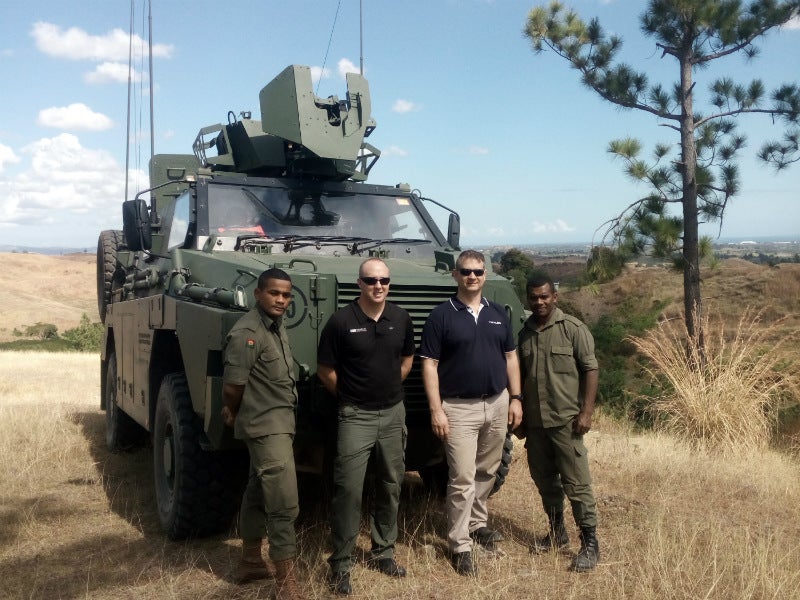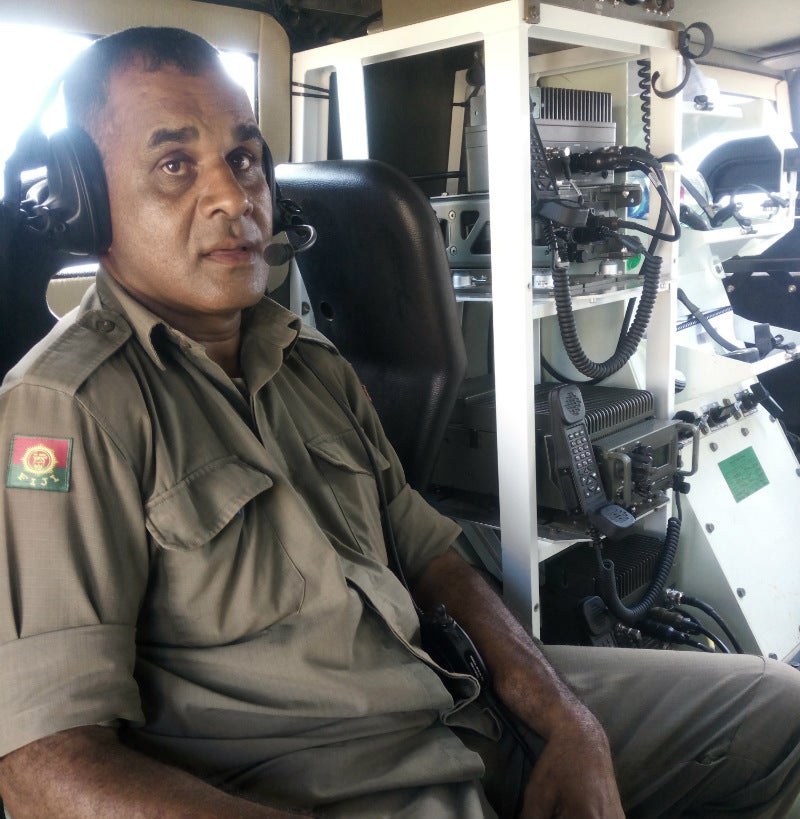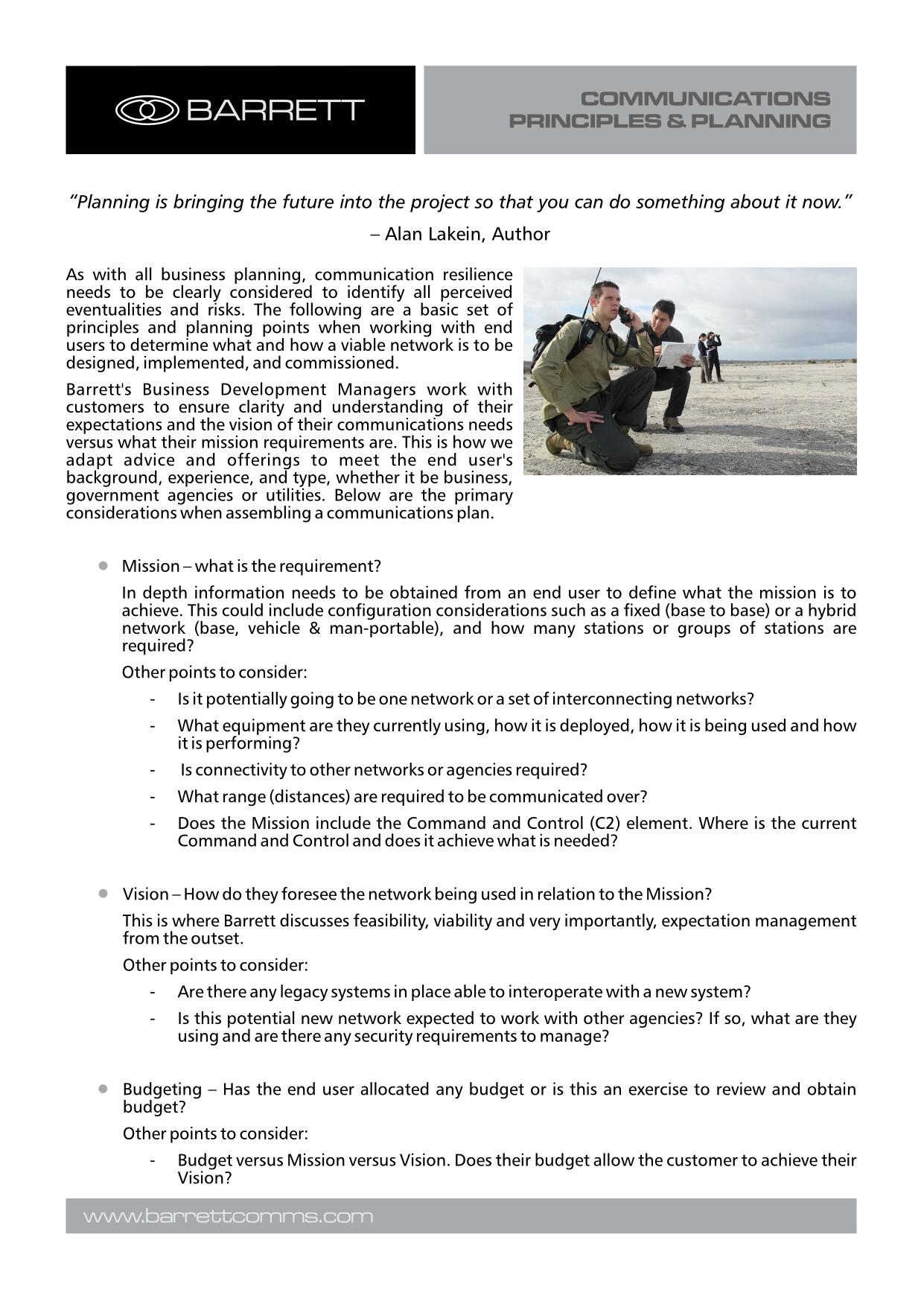
Fiji’s reconditioned armoured troop-carrying vehicles were acquired from Australia and are used by the RFMF for peacekeeping missions. Eight of these vehicles were deployed in the Middle East as part of the service’s annual rotation for a UN mission. The remaining vehicles were delivered to Fiji to be used as local assets.
Barrett provided its PRC-2090 high-frequency (HF) and PRC-2080+ very-high-frequency (VHF) mobile communication systems.
Thales bought and installed the Barrett mobile radio systems in the vehicles and integrated them with the Thales Sotas Intercom system to provide a complete solution for the RFMF. The companies provided a one-week training course on the systems for 12 RFMF personnel when the vehicles arrived in Fiji.
Barrett Communications operations manager Ben Jackson was heavily involved in the project.
“Inside the vehicle is an intercom system so each of the team members inside the vehicle can communicate with each other and our equipment is interfaced into their intercom system,” Mr Jackson explains. “So, depending on what radio selection each of the operators select, they can transmit that on any of our radios, either the VHF or the HF.”
Barrett’s systems were combined with the Thales Sotas Intercom to provide long-distance HF and line-of-sight VHF communications for command vehicle operators using the intercom headset.
Mr Jackson highlighted the adaptability of the systems. “We’ve interfaced into another communications intercom system and the ease of interoperability between the two radio manufacturers is part of the simplicity of our radio equipment,” he says. “It’s so easy to use, easy to interface with, that’s why it’s quite applicable for this type of operation.
“Basically, it’s the ease of use that makes it a good solution for the Fiji Military. They have purchased our equipment in the past for different projects. And by having our equipment also in these vehicles, it makes it compatible and also makes it quite easy for the soldiers to have familiarity with it because it’s common military equipment that’s being used by the Fiji Military.”
PRC-2090 is Barrett’s rugged tactical HF transceiver, which delivers field deployable secure communications with high reliability. Mr Jackson says that use of HF gives troops ‘the ability for long-distance communications.” PRC-2080+ is a low-band VHF transceiver used in multi-role tactical military and security communications.
“The VHF is more for vehicle-to-vehicle or vehicle back to the direct base camp that they’ve deployed from,” Mr Jackson adds. “Once they get out of line-of-sight coverage, the low-band VHF, they have the option of using the HF.”

Barrett’s communication systems are widely used for peacekeeping missions and other military operations throughout the world.
“Because of the low-band VHF, they get greater coverage so when they’re doing troop movements or moving high-value targets around, the vehicles are provided with security and interfacing with our equipment and the low-band VHF technology that we use means that they can cover greater distances ,” he explains.
The Republic of Fiji Armed Forces has 3,500 active soldiers and 6,000 reservists. The service has three battalions that carry out peacekeeping missions, with two of them stationed abroad and one in the country’s capital Suva, as well as three battalions situated across the Fijian islands acting as the territorial force.
Barrett Communications has been providing communications equipment to the Fiji Military for a number of years. “For the last five years, they have been purchasing equipment from us and I’ve been over a couple of times and done training for them,” Mr Jackson says. “They’re using it for multiple roles.
“The Fijian Military supplies troops to UN missions, so as part of these operations when the troops are deployed with their own communications equipment. Being that the UN is similarly a user of our Barrett equipment, having interoperable communications equipment in place with the Fijian Military makes the transition into UN networks simpler”
The installation project was carried out in 2017 and Mr Jackson says that it’s operating as expected. “The systems were all installed over 12 months ago and from all reports, the system is operating as expect and has been very reliable,” Mr Jackson adds.





